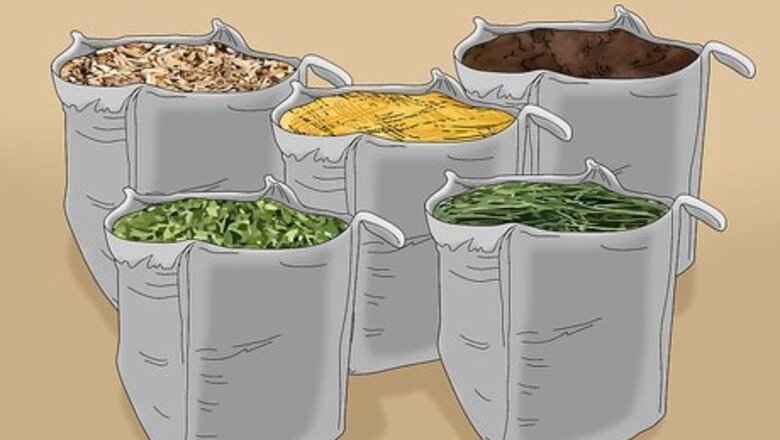
views
Choosing the Right Mulch
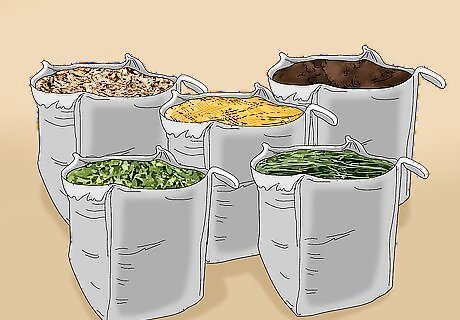
Select an organic mulch to add nutrients to your lawn. Organic mulches include wood chips, straw, grass clippings, chopped leaves, and compost. When the mulch breaks down, it naturally adds nutrients to the underlying soil. Organic mulch will also help with water retention, weed prevention, and will protect plant roots. Organic mulches won't, however, protect from pests. You can purchase organic mulch online or at a gardening store. Organic mulches will have to be replaced or augmented every year.
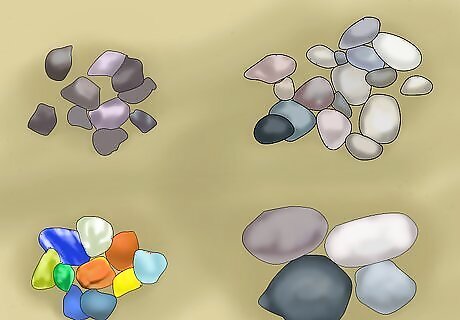
Choose inorganic mulch for a decorative look. Inorganic mulches include gravel, stones, tumbled glass, and river rock. Inorganic mulch can prevent weed germination, help retain moisture, and regulate root temperature, but are often less effective than organic mulches. Unlike organic mulches, however, inorganic mulches come in a wide variety of colors and styles that you can use to decorate your outdoor space. Choose a stone or gravel that matches the aesthetic of your landscaping. For example, you can get an inorganic mulch that matches the color of your house. If you are going to a sleek, modern style, you may want to get stones that are all the same size and shape. Using stone or gravel in high temperatures could overheat and hurt your plants.
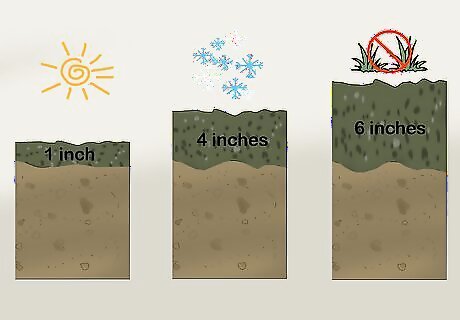
Purchase enough mulch to cover the area. You'll want to cover your flower bed or lawn with 1 inch (2.5 cm) - 2 inches (5.1 cm) of mulch during the summer. To determine how much mulch you need to purchase for your space, you can use an online calculator. Mulch is typically sold by the so-called “yard” which covers 100 square feet (9.3 m) of garden 3 inches (7.6 cm) deep. If you are using mulch for weed control, apply the mulch so it's 2 inches (5.1 cm) - 4 inches (10 cm) thick. If you are mulching vegetable beds during the winter you should lay down a 4 inches (10 cm) - 6 inches (15 cm) layer. Applying too much mulch will suffocate plant roots and kill a plant.
Deciding When to Mulch
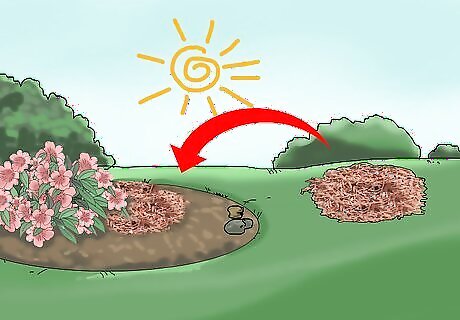
Apply organic mulch in the early summer for the best results. You can still mulch throughout other parts of the year, but the end of spring and beginning of summer are often the best time to lay down mulch. During this time, the soil has warmed up and plants are typically out of dormancy. If you are laying down mulch to prevent weeds or improve the health of your lawn or flower bed, it's best to do it sooner rather than wait for the optimal time.
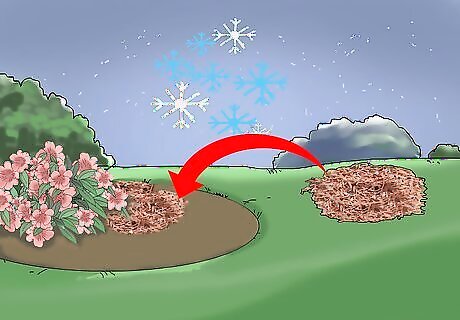
Apply winter mulch in the late fall. A common misconception is that winter mulch can prevent the soil from freezing in cold temperatures. This is untrue, but applying mulch can make the freezing process more gradual and reduce excessive freeze-thaw cycles, which is better for your plants. When laying down mulch for winter protection, lay down 2 inches (5.1 cm) - 4 inches (10 cm) of mulch to the area. You can use both organic and inorganic mulch for winter mulching.
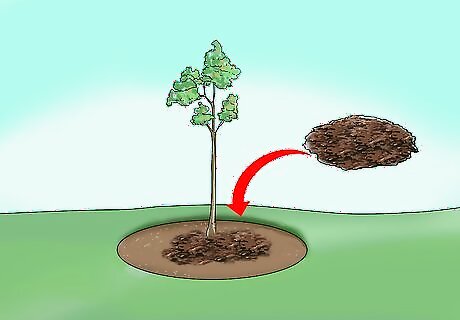
Add organic mulch to newly planted trees or shrubs. Organic mulch like compost or manure are the best types of mulch to use for newly planted shrubs, trees, and flowers because they add essential nutrients to the soil and protect the new plants from weeds. Inorganic mulches won't have an effect on newly planted trees or shrubs. Wood-based organic mulch may compete for nitrogen with your new plants, so if you plan on using them, till nitrogen amendments into the soil beforehand.
Laying Down Mulch
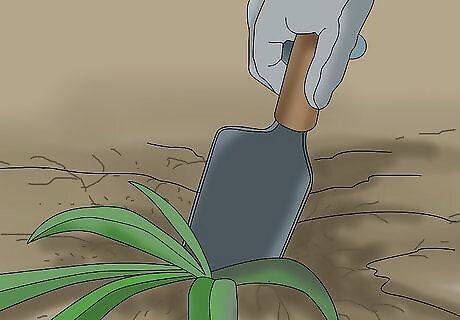
Pull weeds out of the lawn. Use a garden spade to dig out any existing weeds in the area. Make sure to get deep enough to dig out the weeds roots or it may grow back. This step is important so that weeds don't grow under the mulch. If you have time, you can use a chemical weed killer to remove weeds as an alternative. A selective chemical weed killer will only harm broad leaf weeds or grasses. A nonselective chemical weed killer will harm any plant it comes into contact with. Don any safety gear recommended by your weed killer and read the manufacturer's directions regarding application.
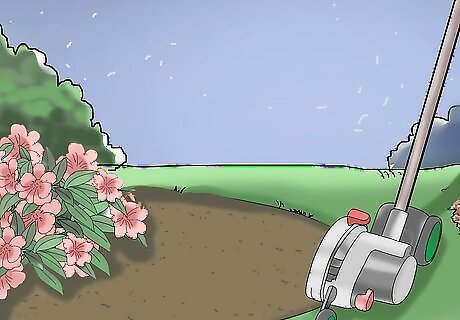
Create an edge for the mulch. Use a shovel or manual edger and carefully dig around the area that you want to mulch. This should create a smooth continuous line around the flower bed or tree that will help keep the mulch off the grass. Don't toss the soil into your flowerbed or you may promote grass growth in your mulch. You can also create an edge by lining up stone around the area that you want to mulch.
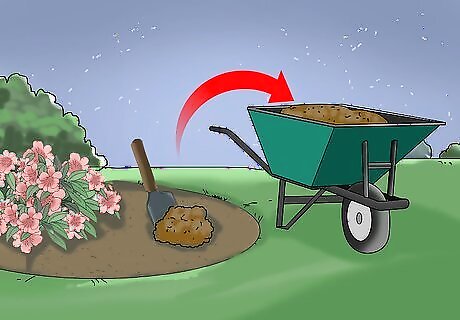
Remove existing mulch or dress the top with a similar mulch. Use a shovel to dig away any existing mulch on the top surface of your lawn or flower bed. Transfer the old mulch into a wheelbarrow and discard it. You'll know you've removed enough mulch when you see dark brown soil with roots in it. You can place the old mulch into a compost pile and let it break down. If you are adding a similar mulch, you can simply top dress the existing mulch after smoothing it out with a rake.
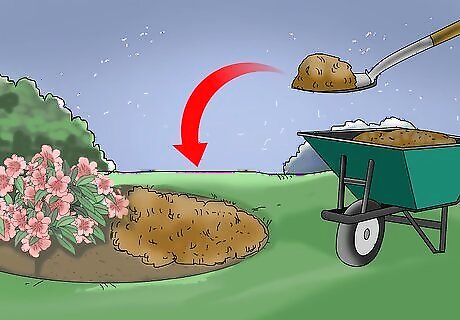
Shovel small piles of mulch onto your flower bed or lawn. First, pour the mulch into a wheelbarrow to make it easier to transport. Then, shovel small piles of mulch in the areas that you want to add it to. Once you have 3-4 small piles, move onto the next step. Just dumping all of the mulch in one area may leave you with too much mulch, which will suffocate your plants' roots.
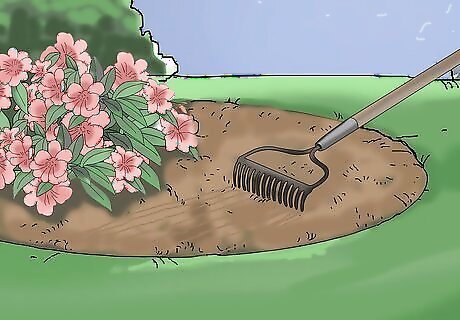
Rake the mulch over the area in an even layer. Rake down the small piles that you shoveled into the area. If you're mulching during the spring or summer, create a 1 inch (2.5 cm) - 2 inches (5.1 cm) layer over the entirety of the area. If you are using a larger, inorganic mulch, you can spread it out with your hands rather than a rake. As you need more, pour more mulch in the area with your shovel. If you are mulching during the winter or for weed prevention, you can create a layer that is 4 inches (10 cm) thick. Leave an 1 inch (2.5 cm) of clearance between the trunk of any trees or plants and the mulch.
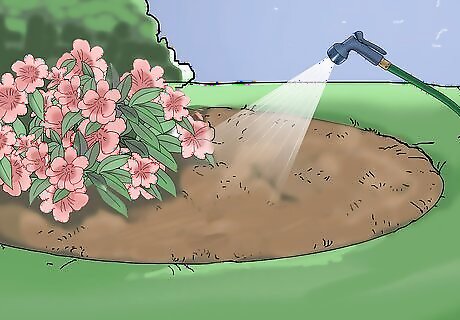
Water organic mulch. Watering organic mulch with a garden hose or buckets of water will prevent it from blowing away and give it moisture. Be careful not to over water the mulch or it the water may pool on the top of it, which could be detrimental to your plants.
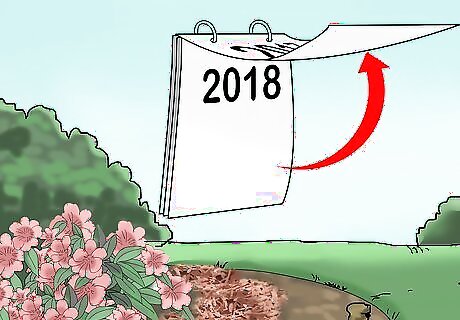
Replace organic mulch every year. Organic mulch will break down over time and lose most of its benefits over time. For this reason, you should remove the old mulch and add new mulch around the same time each year. Wood chips often last longer than other organic mulches but will turn gray over time.
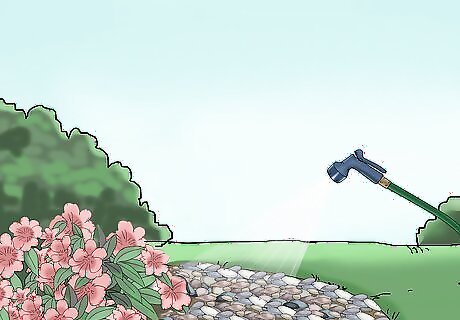
Replace inorganic mulch when it no longer looks fresh. Inorganic mulch lasts much longer than organic mulch and doesn't need to be replaced often. If your gravel or stones look dirty, you could hose them down with water to clean them instead of replacing it.

















Comments
0 comment